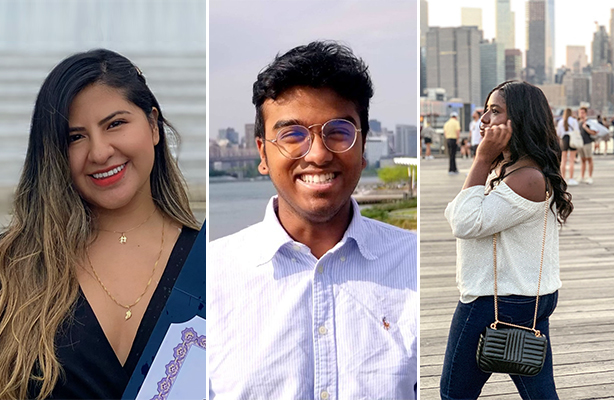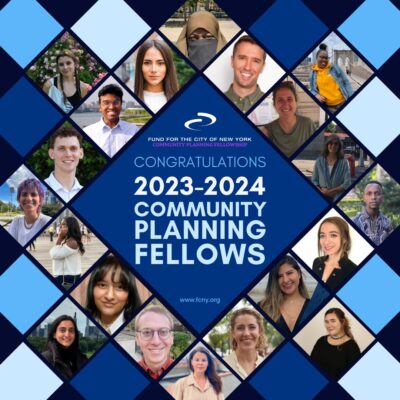Awards & Honors
Spitzer Students Selected as NYC Community Planning Fellows
Three Spitzer School graduate students have been selected for the 2023-2024 cohort of the Fund for the City of New York’s Community Planning Fellows Program. Jasmin Roussos M Arch ’24, Dehaan Rahman M Arch ’24, and Shadeen Dixon M Arch ’24 will learn from seasoned professionals in urban planning, local politics, and community development in addition to collaborating on real-world projects that address key challenges faced by community boards and local neighborhoods.
Congratulations to these students on becoming the next generation of NYC urban planners and policymakers!
Jasmin Roussos is pursuing a master’s degree in architecture at CCNY Spitzer School of Architecture. She received her B.S. in Psychology at City College of New York. Jasmin has over four years of experience working at various nonprofits where she has developed a passion to support and advocate for underrepresented communities. This passion has pushed her to found Healing Arts, a nonprofit organization providing artistic opportunities as a mental healing tool for the low-income elderly community. Her goal is to combine her passion for supporting underrepresented communities and her profession in Architecture to make a powerful impact that shapes both the spaces and policies of the built environment. Jasmin’s research and work focus primarily on affordable and fair housing, healthy and safe communities, and welcoming accessible public spaces. She is committed to social justice through equitable design by addressing inequality, discrimination, and exclusion in the built environment. Jasmin had the opportunity to gain experience in languages, culture, and architecture by studying abroad in Italy, South Korea, and Spain.
Dehaan Rahman is pursuing a Master of Architecture from the City College of New York. He holds a Bachelor of Engineering in Civil Engineering from the same school. This summer he interned at The Williams Sale Partnership Ltd. (WSP) transportation department, drafting details for Amtrak stations in Baltimore and Portland, to make them more ADA accessible. He has also worked on the Harlem Mapping Initiative, through City College, locating community resources and 3D modeling them to highlight patterns and disparities in the area. With this fellowship, Dehaan intends to explore more about the community-based aspect of the rezoning process. His experience in the NYC Department of City Planning has made him familiar with the administrative side of the ULURP process. The Community Planning Fellowship would allow him to collaborate with locals and stakeholders involved in rezoning. This is an essential path for Dehaan’s long-term goal of innovating public spaces to become more adaptable and accommodating to those who are physically disabled and neurodiverse. In his free time, Dehaan enjoys running, hiking, and 3D Printing.
Shadeen Dixon is currently pursuing a Master’s degree at the Bernard & Anne Spitzer School of Architecture. She previously earned a Bachelor’s degree in Architecture Technology at NY City College of Technology. During her undergraduate studies, she interned for her professor, researching sustainable and climate change-mitigated strategies for the Build It Back Sandy initiative. Additionally, she actively contributed to developing presentations on sustainable practices showcased at renowned forums such as AIA (American Institute of Architects) and the Center for Architecture, advocating for eco-friendly architectural approaches. As an advocate for housing justice, she is dedicated to addressing the housing needs of disenfranchised African-American communities. She strongly believes in inclusive decision-making and actively involves community members in her work. Valuing community perspectives, she focuses on sustainable and affordable housing practices, fostering empowerment and uplifting the voices of these communities. In her community projects, she plans to integrate healthy sustainable design practices and green infrastructure, prioritizing environmental responsibility while ensuring affordability and accessibility for all residents. Her goal is to contribute to equitable and inclusive urban development by proposing design strategies that promote social equity and resilience. She envisions architecture as a catalyst for positive change, empowering communities to thrive in sustainable environments that withstand the challenges of housing justice and climate change.



